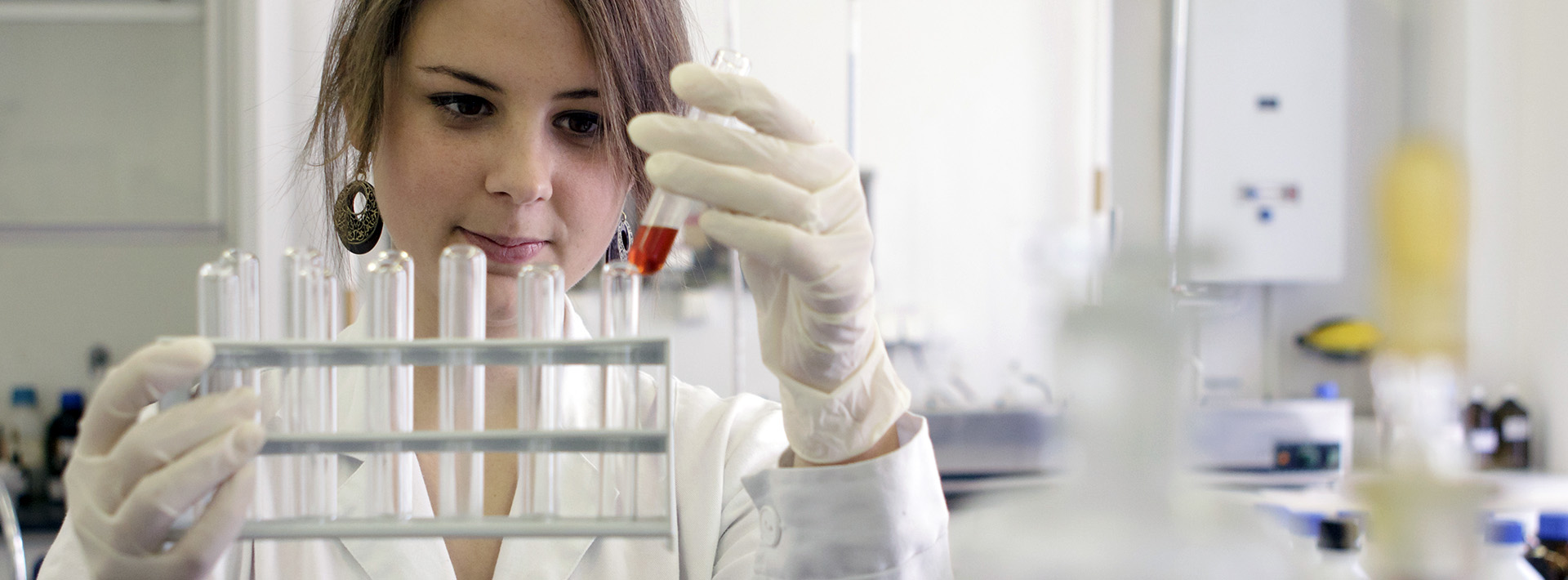Data
Official data in SubjectManager for the following academic year: 2020-2021
Course director
-
Dr. Sándor KUNSÁGI-MÁTÉ
associate professor,
Department of Organic and Pharmacological Chemistry -
Number of hours/semester
lectures: 24 hours
practices: 0 hours
seminars: 0 hours
total of: 24 hours
Subject data
- Code of subject: OBF-WMT-T
- 2 kredit
- Biotechnology MSc
- Optional modul
- both semesters
-
Course headcount limitations
min. 1 – max. 12
Topic
Types of molecular interactions. Chemical equilibrium based on the weak molecular interactions. Determination of the chemical equilibrium and the stoichiometry of the complexes. Correlation between the chemical equilibrium and the free enthalpy. Investigation of the weak interaction by spectroscopical methods. Application of the Job's method in the fluorescence measurements. Direct measuring the interaction enthalpy by differential scanning calorimetry. Interactions of aromatic compounds. Interactions of antibiotics with membrane elements. Interactions of bioactive molecules with DNA. Investigations of model-systems: interactions of calixarenes with phenols and fullerenes. Packing of drug molecules by molecular containers. Interactions of bioactive molecules with elements of cell membranes. Self-assembly of some hormones by weak interactions.
Lectures
- 1. Types of molecular interactions. - Dr. Kunsági-Máté Sándor
- 2. Chemical equilibrium based on the weak molecular interactions. - Dr. Kunsági-Máté Sándor
- 3. An example: Noncovalent Interaction of small molecules with albumins - Dr. Kunsági-Máté Sándor
- 4. Effect of Molecular Environment on the Formation Kinetics of Complexes of Malvidin-3-O-glucoside with Caffeic Acid and Catechin - Dr. Kunsági-Máté Sándor
- 5. Determination of the chemical equilibrium and the stoichiometry of the complexes. - Dr. Kunsági-Máté Sándor
- 6. Role of the Conformational Freedom of the Skeleton in the Complex Formation Ability of Resorcinarene Derivatives toward a Neutral Phenol Guest - Dr. Kunsági-Máté Sándor
- 7. Correlation between the chemical equilibrium and the free enthalpy. - Dr. Kunsági-Máté Sándor
- 8. An example: Flavonoid aglycones can compete with Ochratoxin A for human serum albumin: A new possible mode of action - Dr. Kunsági-Máté Sándor
- 9. Investigation of the weak interaction by measuring the fluorescence. - Dr. Kunsági-Máté Sándor
- 10. Competitive hydrogen bonds associated with the effect of primycin antibiotic on oleic acid as a building block of plasma membranes - Dr. Kunsági-Máté Sándor
- 11. Application of the Job's method in the fluorescence measurements. - Dr. Kunsági-Máté Sándor
- 12. Complex formation between primycin and ergosterol: entropy-driven initiation of modification of the fungal plasma membrane structure - Dr. Kunsági-Máté Sándor
- 13. Direct measuring the interaction enthalpy by differential scanning calorimetry. - Dr. Kunsági-Máté Sándor
- 14. Thermodynamic and kineTic processes during the unfolding of BSA in the presence of the mycotoxin patulin - Dr. Kunsági-Máté Sándor
- 15. Interactions of aromatic compounds. Interactions of bioactive compounds with DNA. - Dr. Kunsági-Máté Sándor
- 16. Thermodynamic study of the effects of ethanol on the interaction of some toxins with human serum albumin - Dr. Kunsági-Máté Sándor
- 17. Role of the Conformational Freedom of the Skeleton in the Complex Formation Ability of Resorcinarene Derivatives toward a Neutral Phenol Guest - Dr. Kunsági-Máté Sándor
- 18. Investigations of model-systems: interactions of calixarenes with phenols and fullerenes. - Dr. Kunsági-Máté Sándor
- 19. Modifications of structure of serum albumins by molecular capsules. Interactions of molecular capsules with aromatic amino acids at terminated positions. - Dr. Kunsági-Máté Sándor
- 20. Investigations of the conformation changes of proteins by fluorescence and calorimetric methods. - Dr. Kunsági-Máté Sándor
- 21. Antioxidant and antimicrobial properties of randomly methylated ?-cyclodextrin - captured essential oils - Dr. Kunsági-Máté Sándor
- 22. Controlling of self-assembly of some hormones by weak interactions. - Dr. Kunsági-Máté Sándor
- 23. Formulation and detection: Complex formation of flavonoids fisetin and geraldol with ?-cyclodextrins - Dr. Kunsági-Máté Sándor
- 24. Entropy-driven complex formation of malvidin-3-O-glucoside with common polyphenols in ethanol-water binary solutions - Dr. Kunsági-Máté Sándor
Practices
Seminars
Reading material
Obligatory literature
David Freifelder: Physical Biochemistry
Literature developed by the Department
Shyllabus and ppt presentation is available.
Notes
Recommended literature
Atkins: Physical Chemistry I-III.
David Freifelder: Physical Biochemistry
Conditions for acceptance of the semester
Maximum of 15 % absence allowed
Mid-term exams
One written exam during the semester, the acceptance level is 60%.
Making up for missed classes
There is no possibility to make up for a missed lecture and practice
Exam topics/questions
Types of molecular interactions.
Chemical equilibrium based on the weak molecular interactions.
Determination of the chemical equilibrium and the stoichiometry of the complexes.
Correlation between the chemical equilibrium and the Gibbs free energy.
Investigation of the weak interaction by spectroscopical methods.
Application of the Jobs method in the fluorescence measurements.
Direct measuring the interaction enthalpy by differential scanning calorimetry.
Interactions of aromatic compounds.
Interactions of bioactive compounds with DNA.
Investigations of model-systems: interactions of calixarenes with phenols and fullerenes.
Packing of drug molecules by molecular containers.
Interactions of bioactive molecules with elements of cell membranes.
Self-assembly of some hormones by weak interactions.
